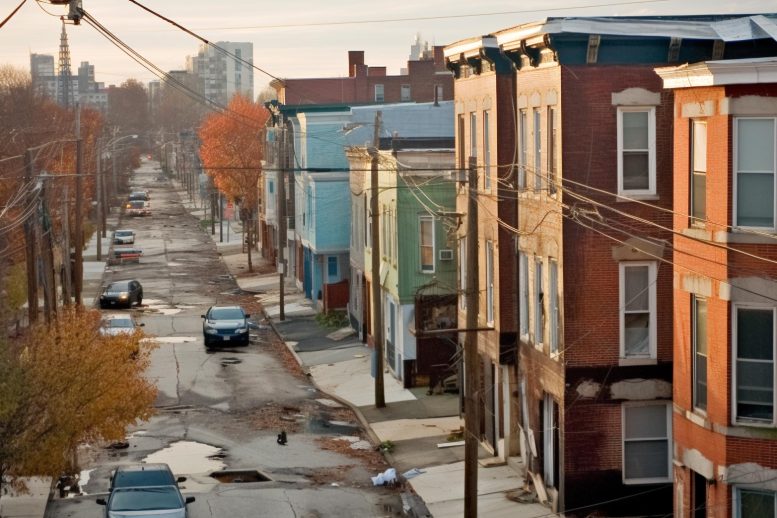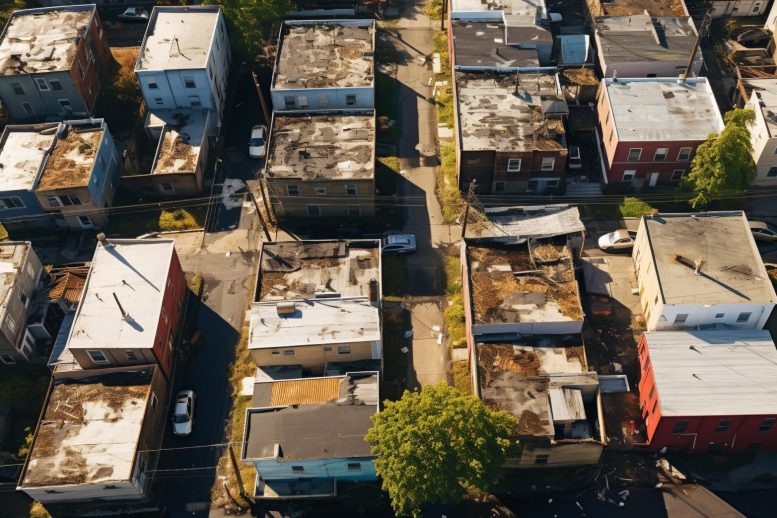
Black adults residing in historically redlined neighborhoods face a higher risk of heart failure, a recent study in the American Heart Association journal Circulation suggests.
A new study reveals that historically redlined neighborhoods have higher rates of heart failure among Black residents, illuminating the lasting health impact of this discriminatory housing practice. The findings underscore the urgent need for aggressive anti-discrimination enforcement in housing and improved homeownership pathways for Black families to promote health equity.
Redlining and Heart Failure: An Unsettling Link
New research reveals that Black adults residing in historically redlined communities may be at a heightened risk for heart failure compared to those in neighborhoods not subjected to the practice.
Redlining, a now-illegal practice, involved denying low-interest mortgage loans to Black, Asian, Hispanic, and immigrant families.
This study, published in the American Heart Association journal Circulation on July 17, found no added risk for heart failure among White people living in redlined neighborhoods. The research encompassed nearly 2.4 million adults living in U.S. communities with varying degrees of redlining.
Historical Policies and Contemporary Health
“Although discriminatory housing policies were effectively outlawed nearly a half-century ago, the relationship between historic redlining practices and people’s health today gives us unique insight into how historical policies may still be exerting their effects on the health of many communities,” said study co-senior author Dr. Shreya Rao. Rao is a cardiologist and an assistant professor in the department of internal medicine at the University of Texas Health Science Center and University Hospital in San Antonio.
Legacy of Redlining
After the Great Depression, President Franklin Roosevelt’s New Deal led to the creation of a federal agency that sponsored low-interest mortgage loans. However, these benefits were inaccessible to Black families through “redlining,” which color-coded neighborhoods based on investment risk. Majority-Black communities were deemed “too risky” for mortgage insurance, thus reducing tax revenues, investments in local schools, and other government programs and services.
Although redlining was banned in 1968, it has left long-lasting financial and health disparities, with previous research linking redlining to higher rates of stroke, high blood pressure, Type 2 diabetes, and early mortality from heart disease.
Redlining and Heart Failure
Heart failure, a progressive condition in which the heart cannot pump enough blood to the body, affects about 6.7 million U.S. adults, with Black people disproportionately affected.
In the current study, investigators analyzed health records in the Medicare Beneficiary Summary Files from 2014 to 2019. They included roughly 1.6 million participants who self-identified as White and 801,452 who identified as Black. Other races were excluded due to insufficient numbers, as well as people who had a history of heart failure or heart attacks in the preceding two years, had less than two years of Medicare coverage before the study began, or were younger than 40.

Despite the banning of redlining in 1968, it has left health and financial disparities that persist today.
Mapping Redlining’s Impact
The researchers overlaid historical redlining maps onto maps of 1,044 ZIP codes in the U.S., categorizing participants into four groups based on their neighborhoods’ exposure to redlining practices.
They discovered that Black adults in ZIP codes with significant historic redlining faced an 8% higher risk of heart failure compared to those in areas with low levels of historic redlining. In contrast, White adults in areas with high levels of historic redlining had no increased risk of heart failure.
Socioeconomic Factors and Health Disparities
The study also considered socioeconomic distress by using scores for each ZIP code from the Social Deprivation Index (SDI), collected by the U.S. Census Bureau from 2011 to 2015. The SDI takes into account factors like poverty rate, education level, employment, access to transportation, single-parent households, rental versus ownership, and household overcrowding.
Half the excess risk of heart failure among Black adults could be attributed to higher levels of socioeconomic distress, as indicated by SDI scores in those areas. The highest risk of heart failure was found among Black adults living in redlined communities with high SDI scores.
“These findings show us the harm that discriminatory and racist housing policies have had on generations of Black adults and suggest the long-term impact of such policies on cardiovascular health disparities,” senior author Dr. Ambarish Pandey said in the news release. Pandey is a cardiologist and an assistant professor in the department of internal medicine at UT Southwestern Medical Center in Dallas. “A reparative approach may be needed on the part of federal, state and local governments to intervene and drive investment in redlined communities.”
Housing Policies and Health Equity
The research findings also underscore the pivotal role housing plays as a social determinant of health, Pandey said. “Aggressive enforcement of anti-discrimination laws in housing and support for and pathways to homeownership for Black families are needed in order to begin to achieve equity in health.”
Reference: “Historical Redlining, Socioeconomic Distress, and Risk of Heart Failure Among Medicare Beneficiaries” by Amgad Mentias, Mahasin S. Mujahid, Andrew Sumarsono, Robert K. Nelson, Justin M. Madron, Tiffany M. Powell-Wiley, Utibe R. Essien, Neil Keshvani, Saket Girotra, Alanna A. Morris, Mario Sims, Quinn Capers IV, Clyde Yancy, Milind Y. Desai, Venu Menon, Shreya Rao and Ambarish Pandey, 17 July 2023, Circulation.
DOI: 10.1161/CIRCULATIONAHA.123.064351










